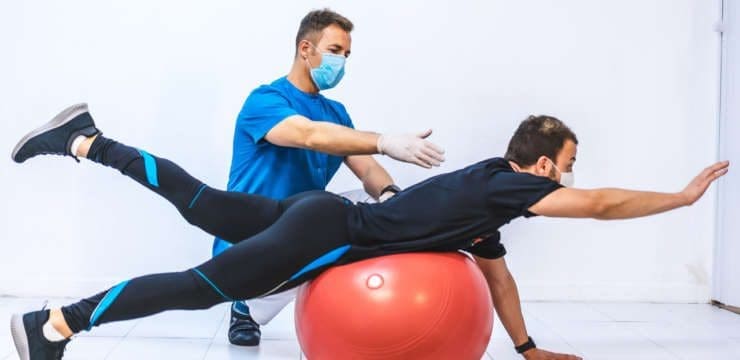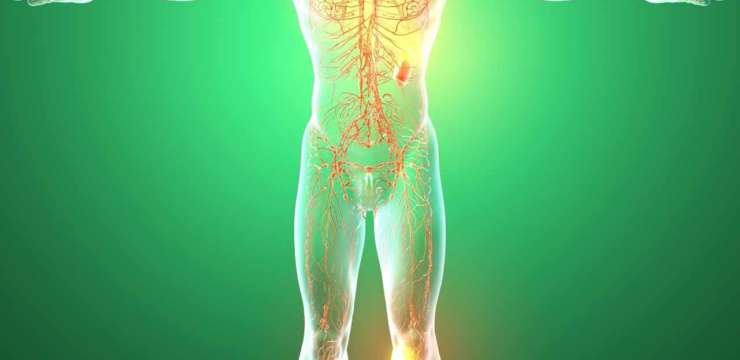“For individuals into sports, fitness enthusiasts, and those that engage in physical activities, musculoskeletal injuries are common. Can ice tape help decrease inflammation and swelling…


“For individuals into sports, fitness enthusiasts, and those that engage in physical activities, musculoskeletal injuries are common. Can ice tape help decrease inflammation and swelling…
“Individuals dealing with various conditions and diseases and ongoing research to find treatments, where do human regenerative cells come from?” Regenerative Cells Regenerative cells are…

Upper and middle/mid-back pain and/or pain between the shoulder blades is common for individuals who spend long hours sitting or standing. Stress, tension, and repetitive…

Any form of physical sports activity puts the body at risk for injury. Chiropractic care can prevent injury for all athletes, weekend warriors, and fitness…

Prolonged standing can cause the pelvis to push backward, increasing the curve of the lower back/lumbar region. This increased pressure on the soft tissues surrounding…

The fascia is important for connecting the musculoskeletal system, stabilizing function, and keeping the body healthy and balanced. Sugar consumption and the abundance of sugar…

Neuropathy therapeutic massage is a system of structured palpations or movements of the body’s soft tissues. When the nerves don’t get enough oxygen and nutrients…

Many live with chronic discomfort and pain regularly in one or both knees. This could be from past injuries, being overweight, lack of physical conditioning,…

Forearm pain refers to soreness, aches, or discomfort between the wrist and the elbow. An injury or inflammation can affect any tissues, including muscles, bones,…

Maintaining the body’s musculoskeletal system and keeping it strong can be done through chiropractic and by managing general overall health. This system includes the: Bones…

Tissues
The human body is composed of many tissues. Each organ in the body can be broken down into tissues. Tissues are sorted based on their basic functions. These include:
Epithelial Tissue
Connective TissueÂ
Muscle Tissue
Nerves Tissue
Muscle Tissue
Out of these tissue types, the only tissue that contracts is muscle. Muscle tissue is further broken down into skeletal, cardiac, and smooth. These tissues are contracted when stimulated.Â
Connective Tissue
Connective tissue has three types as well. Connective tissue proper, fluid connective tissue, and supporting connective tissue. However, all three of these connective tissue types are made up of the same components. They all include specialized cells, protein fibers, and ground substances.Â
The differences between these tissues can be seen in what subdivides them. For example, the fluid connective tissue is subdivided into blood and lymph, whereas supporting connective tissue can be divided into cartilage and bone. Lastly, connective tissue proper is divided into loose connective tissue and dense connective tissue.Â
The substance that connective tissue is composed of is a clear fluid. This fluid has a similar consistency to maple syrup but is clear and odorless. Its primary function is to fill the spaces between the cells and surround all fibers.Â
Loose and Dense Connective TissueÂ
The loose connective tissue binds many structures together. Loose connective tissue allows mobility. Dense connective tissue forms collagen that is strong and flexible. These fibers form branching frameworks for the rest of the body. With the fibers being parallel to each other and very tightly packed, there are forces applied to the issue. Dense connective tissue is responsible for forming tendons, ligaments, capsules of organs, and fascia.Â
Fascia
Fascia varies as its function is primarily based on location. Fascia forms individual muscle fibers and the portions between muscles. These sheets can be thin or thick. Fascia is flexible and can stretch. Fascia lies under the skin, and deep fascia lies overs the muscles. Therefore, it is important that we move fascia frequently. Over time, if we are not stretching, the fascia will become tighter and tighter and eventually restrict movement. Fascia is in every cell, tissue, and organ.Â
When fascia is functioning properly, it has a positive impact on the autonomic and central nervous systems. However, when it is impacted by poor posture, inflammation, or trauma, the fascia can become distorted and apply abnormal pressure to areas of the body.Â
Phase AngleÂ
When focusing on the orthomolecular science of the body, we see how important tissue is. Fascia surrounds every cell, which can help determine cellular health. The phase angle is a snapshot at cellular health where we are able to see how healthy and strong an individual’s cells are. We want patients’ phase angles to be as close to a seven as possible. With a low phase angle (closer to 3 and 4), we see weakness in the cell. Below is a video that helps describes phase angle in more detail:Â
[embedyt] www.youtube.com/watch?v=WwbIsPNUYqs%5B/embedyt%5D
IT IS IMPORTANT TO HAVE HEALTHY CELLS AND HEALTHY TISSUE. WITH THE USE OF THE INBODY 770, WE ARE ABLE TO ASSESS PATIENTS’ MUSCLE MASS, BODY FAT MASS, AND PHASE ANGLE. THE INBODY IS NOT JUST FOR PATIENTS WHO ARE WORRIED ABOUT MUSCLE MASS BUT FOR EACH INDIVIDUAL WE SEE. IT PROVIDES IMPORTANT MARKERS EVERYONE SHOULD BE AWARE OF. -KENNA VAUGHN, ACSM-EP, SENIOR HEALTH COACH
References:Â
Grisanti, Ron, and Brad Hayes, DC  FDMT580G Myofascial Disruption Technique. Functional Medicine University, www.functionalmedicineuniversity.com/members/598.cfm. Â
Additional Online Links & Resources (Available 24/7)Â Â
Â
Online Appointments or Consultations:  https://bit.ly/Book-Online-Appointment Â
Â
Online Physical Injury / Accident Intake Form: https://bit.ly/Fill-Out-Your-Online-History Â
Â
Online Functional Medicine Assessment:Â https://bit.ly/functionmed